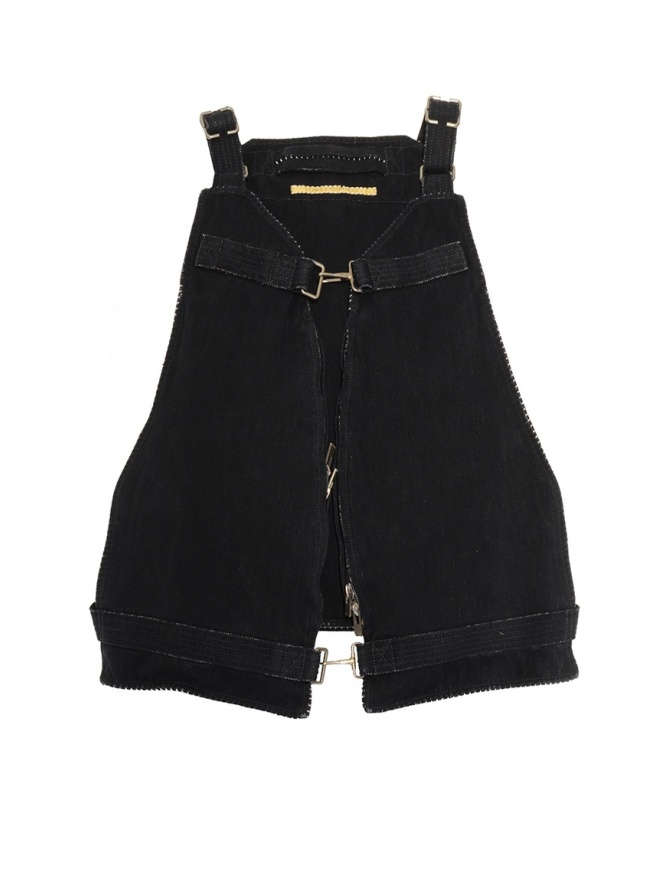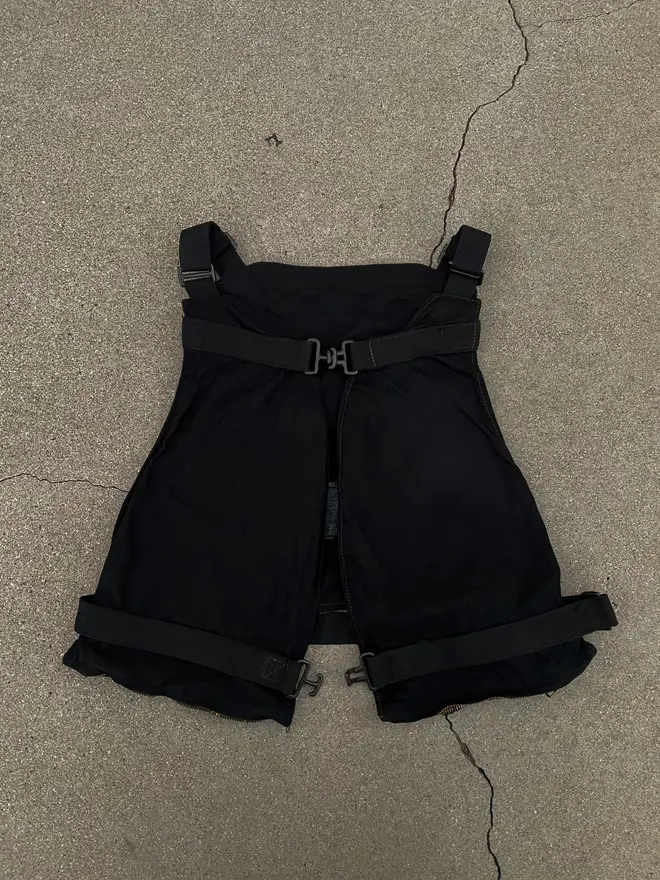Carol Christian Poell (CCP) is a powerhouse in fashion; an inventor of unique materials and novel manufacturing processes; an artisan of articulated and meticulously tailored designs. Today, however, I’m here to talk about one of his simplest designs: the vest bag. Materially, it’s little more than a few zippered pockets held together by some straps and clasps. But of course, most things are simple when reduced to their raw materials. My object is instead to demonstrate the beauty of this object in terms of the immaterial. After that, I document a bit of the process I followed to produce my own version.
Background
The vest bag is inspired by a vintage US life preserver specified by MIL-L-176531, formally titled “Life Preserver, Vest, Work Type, Unicellular Plastic”. The spec was published in 1959 and wasn’t withdrawn until 2002. Over the span of its 43 years in-spec, the vest saw numerous iterations and implementations, thus many of the examples remaining in circulation today vary significantly from one to another.
CCP’s Rendition
While the silhouette remains mostly faithful to its inspiration, there are a few notable differences:
| Characteristic | Original | CCP |
|---|---|---|
| Fabric | Canvas | Denim, leather |
| Clasp | Surcingle buckle | Lever hook |
| Dimensions | Short back | Long back |
| Pocket openings | Horizontal zippers or snaps | Vertical zippers |
What I Like About It
Function
The vest bag is simultaneously unobstructive and voluminous; it remains close to one’s body while the massive front pockets hold just about everything one needs. Moreover, the locations of the zippers are ergonomic and intuitive, making opening and closing of the pockets a natural and convenient procedure, even one-handed.
Form
The vest, like most military designs, stands at the intersection of industrial and anatomical design. It is rugged, but conforms and contours to the body. It is unique yet modest. It is simple without sacrificing style. To me, it is beautiful.
Feeling
I like the idea of clothing as armour. Physically, yes, cloth acts as a layer which separates one from the elements; but metaphysically, too, it protects one from unwelcome eyes, thus acting as shield behind which one may safely navigate the world.
Given the vest’s origin is a life preserver, it exemplifies cloth-as-armour to the highest degree. This, I think, bestows upon it a certain poetic beauty.
My Project
After two years of searching, I finally got my hands on a MIL-L-17653. I scoured eBay auctions, antique and military surplus stores, and online storefronts such as Grailed, Etsy, Poshmark, and Depop. The only examples I found during this time were price-hiked by Unsound Rags or Grailed resellers. That was, until one warm summer day on which I stumbled across an eBay auction for a dirty, slightly mangled, and bright orange example which had zero bidders and ended soon. Of course, I put a bid in. To my surprise, the minimum bid won. Two years of searching all to end in the 30 seconds or so it takes to place a bid!
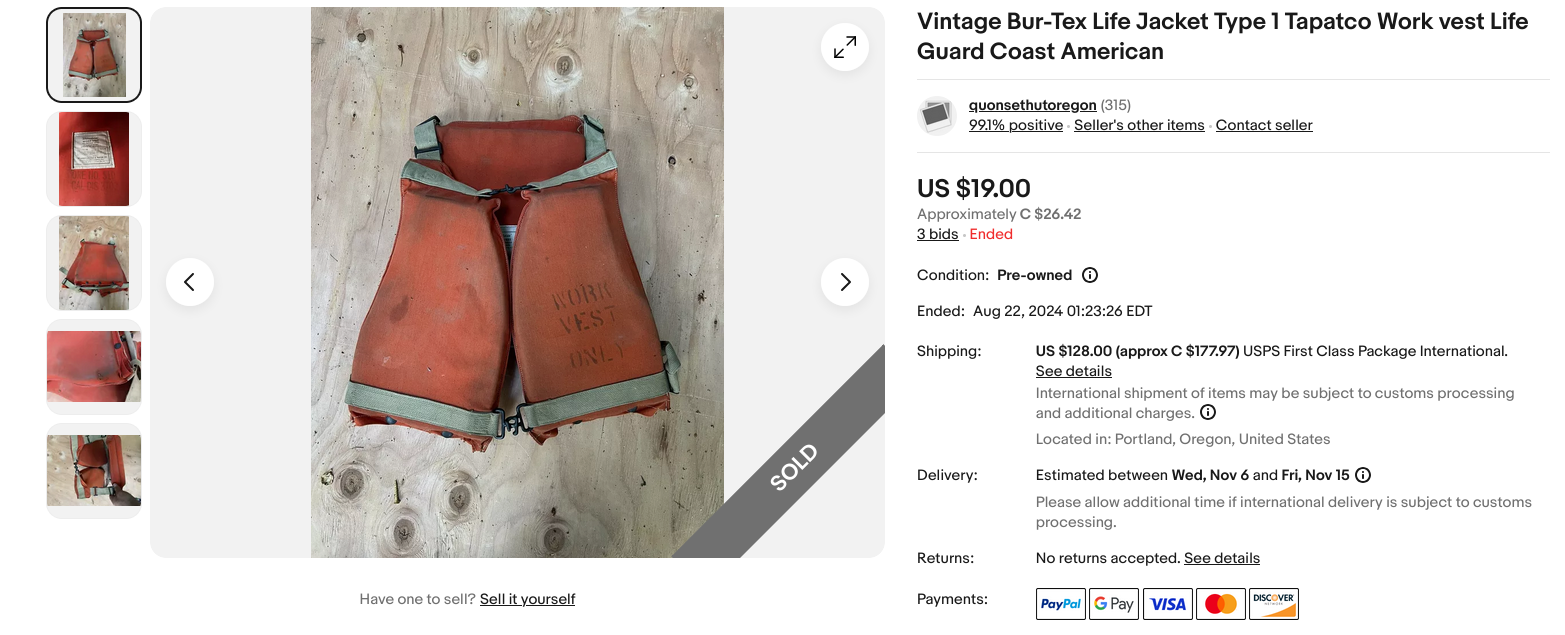
Upon delivery, the first sensation to hit me was not the glorious sight of the vest, but its smell. It held a peculiar and pungent musk of what I think was the unicellular plastic, mould, and dust; a smell that must have been marinating for many years. Washing it with vinegar and sun-drying (fortunately!) removed the odour.

Object Dye
The orange tone of the vest, although faded from its former glory, remained obnoxious. I’m not a big fan of orange, I wanted it as black as possible. To achieve this end, I object dyed the vest twice in Rit jet black until the desired shade was achieved. I purchased a third bottle as a backup. I used the following mix for both dye baths:
- 10 L boiling water
- An entire bottle of Rit jet black
- 250 mL salt
- 250 mL vinegar
- 5 mL liquid dish soap
The first bath resulted in the body panels adopting a maroon tone while the strapping acquired more of a purple hue. A peculiar side effect of the dyeing process was that the black coating covering the hardware was stripped, exposing the brass underneath.
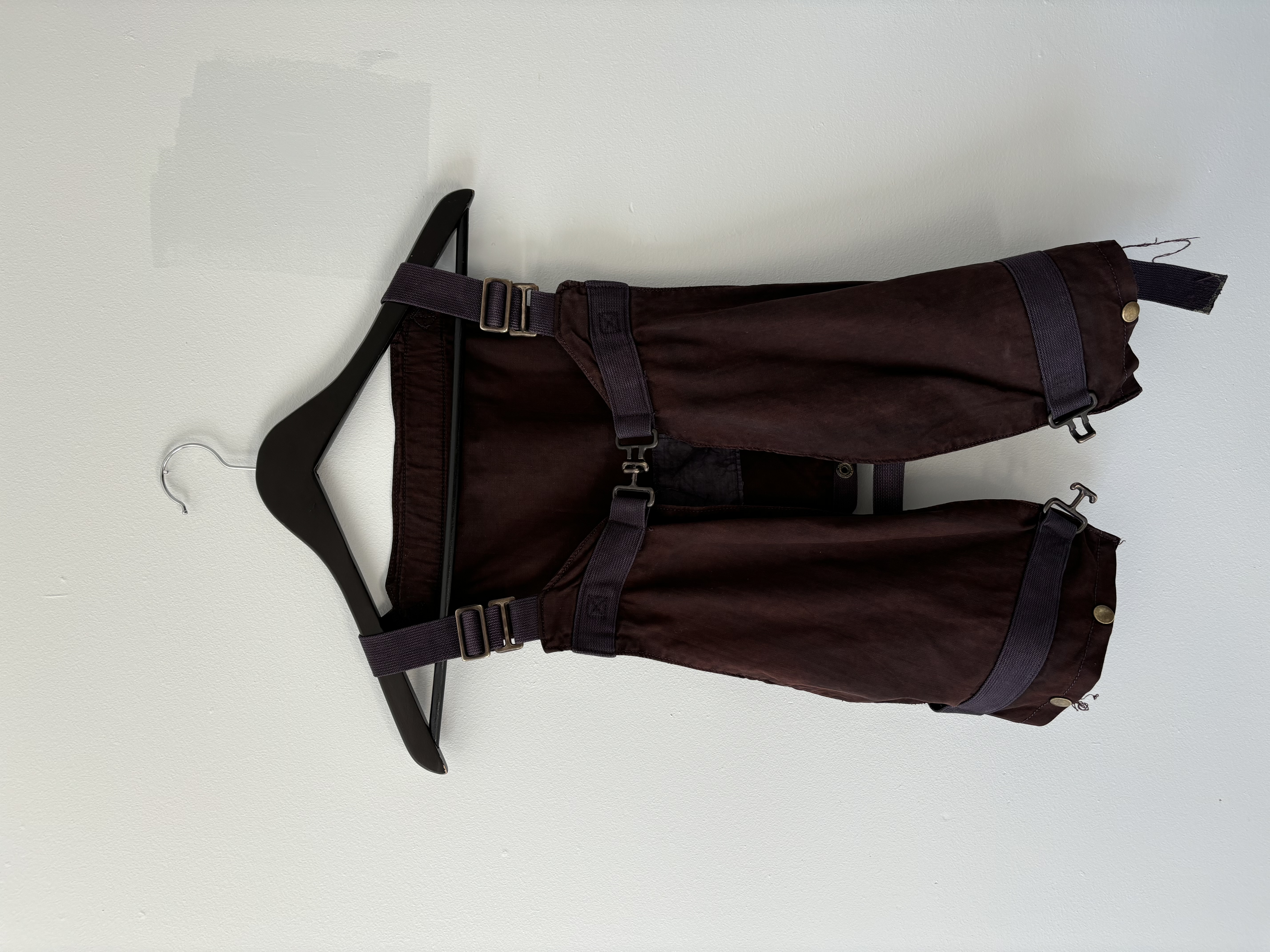
The second bath produced a relatively uniform shade of black which I was content with.
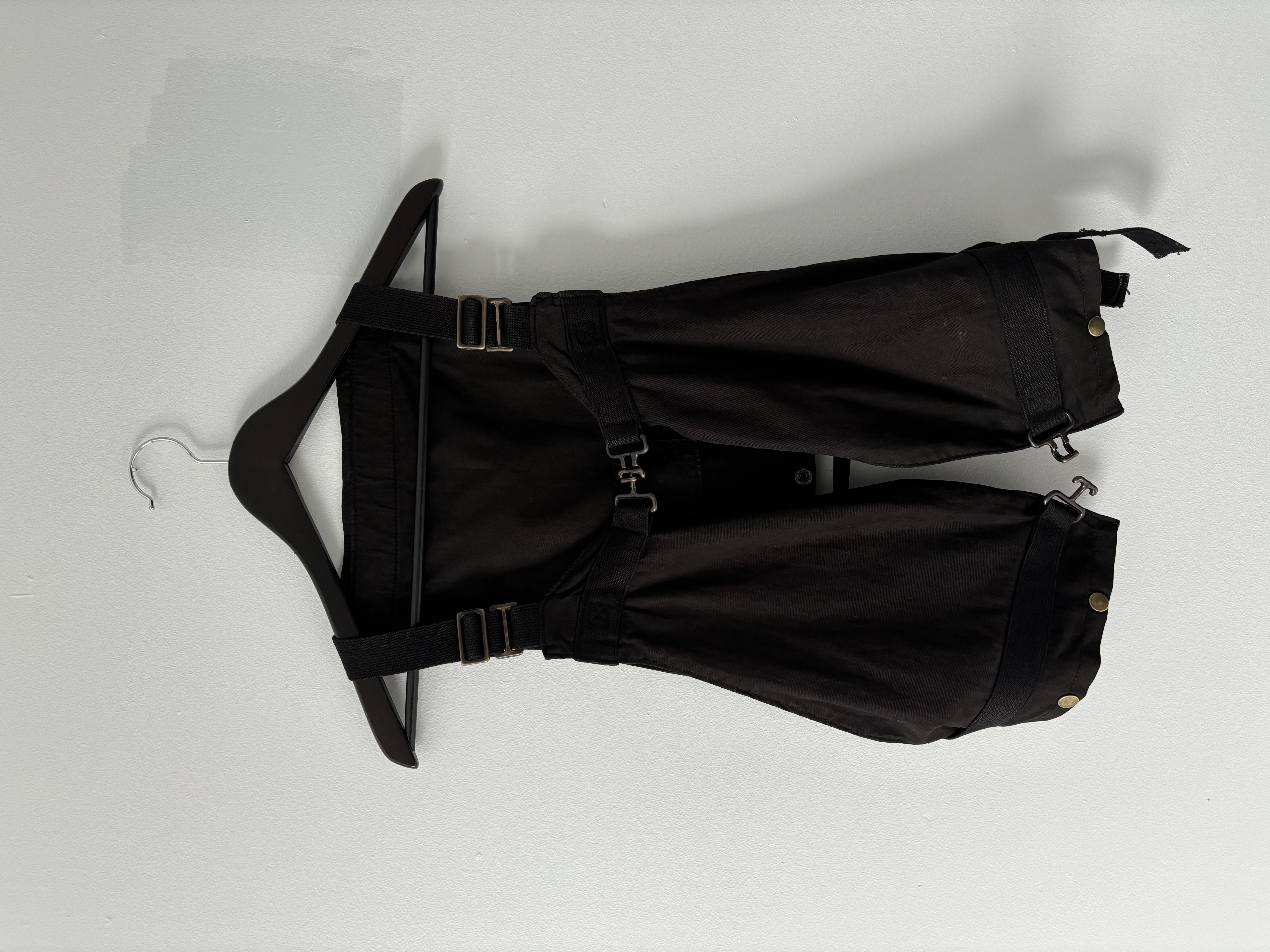
Zippers
I plan to wear this vest until it falls apart, repair it, then repeat. Therefore I needed durable but smooth zippers. And to meet these requirements, I didn’t mind paying up a little. So I went with the “Rolls Royce of Zippers”, Riri.
I picked out some Riri M6 zippers from Sewing Supply Depot since they were the only Canadian retailer of Riri I could find (and they charged much less than their American counterparts). The only caveat is their selection of finishes: they only stock nickel. So nickel I got.
In retrospect, I was impatient. I should have taken more time to source a more suitable finish, such as gunmetal or aged brass. Nickel contrasts the naturally ageing brass of the other hardware, and as a result, appears out of place.
Anyways, IDK how to sew so I sent the vest and zippers to a local tailor. After some show and tell, miming how I wanted the zippers to be installed, and sending them some sample images, I left the pieces in their hands. One week later I picked up the final product:
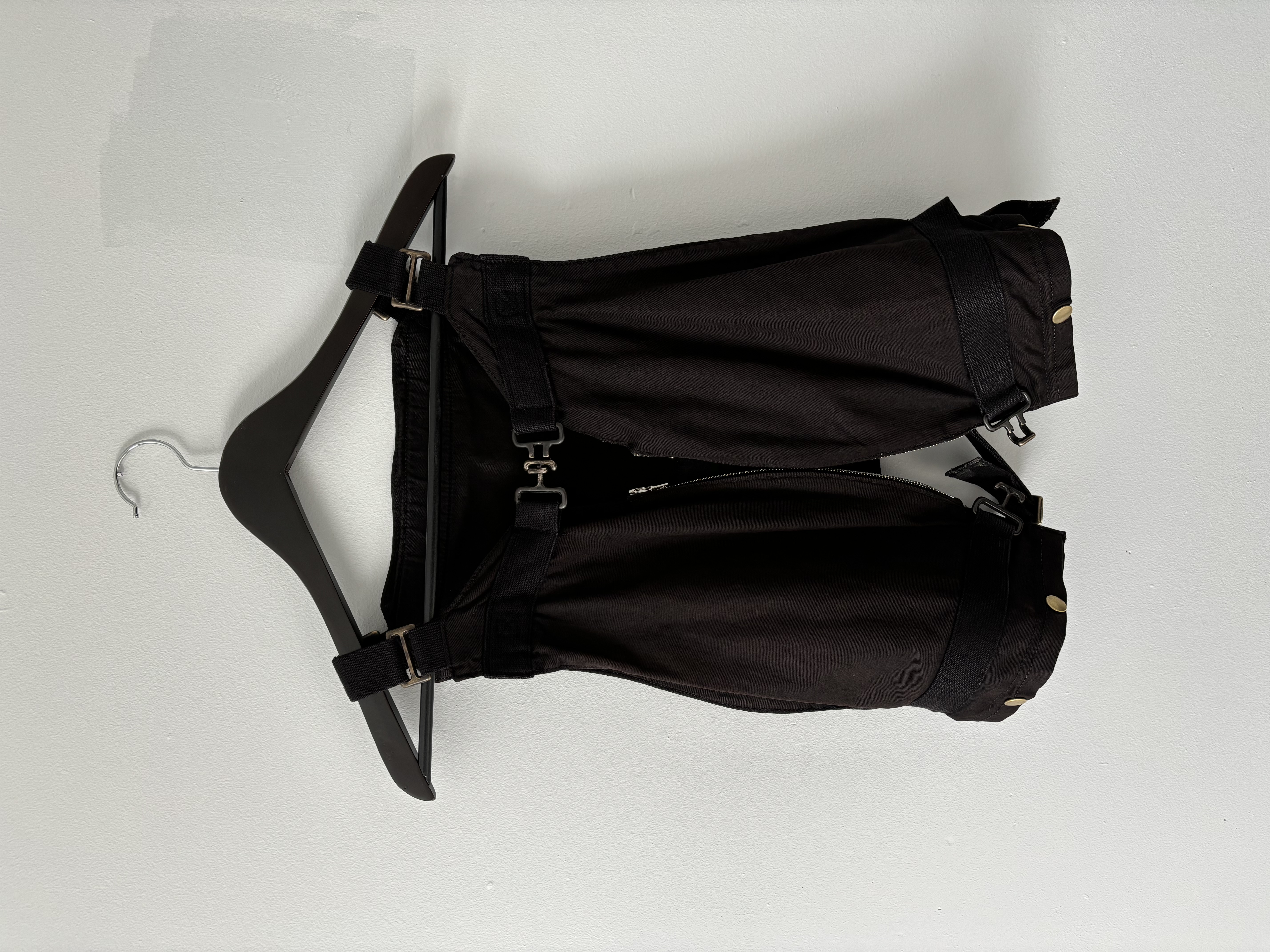
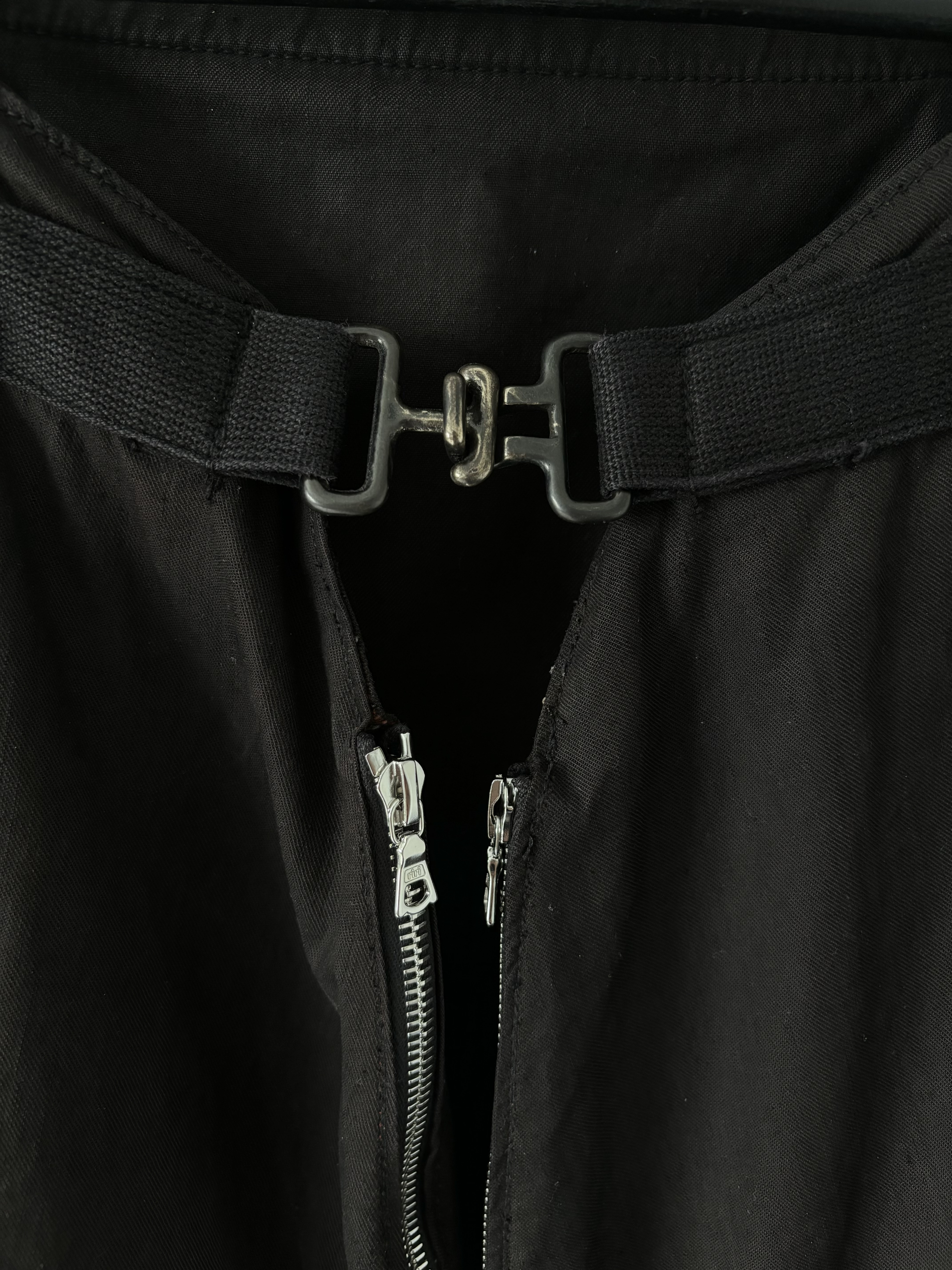
Thoughts
Not everything is perfect, but that’s alright. For example, I’m not a fan of the brass snaps and was advised against removing them, but they can simply be re-coated. The zippers, too, are not quite the colour I wanted, but I’m not super picky about them either.
Overall, I am very happy with the final product. This is something I have been dreaming of for years (beyond those in which I was actively searching). Since the day the vest entered my hands, I have worn it almost daily. I plan to continue wearing it almost daily; I want it to age alongside me and develop its own charms.
Just as a man lives and grows old, so too does fabric live and age. When fabric is left to age for a year or two, it naturally contracts, and at this point it reveals its charm. The threads have a life of their own, they pass through the seasons and mature. It is only through this process that the true appeal of the fabric is revealed.
- Yohji Yamamoto, My Dear Bomb
